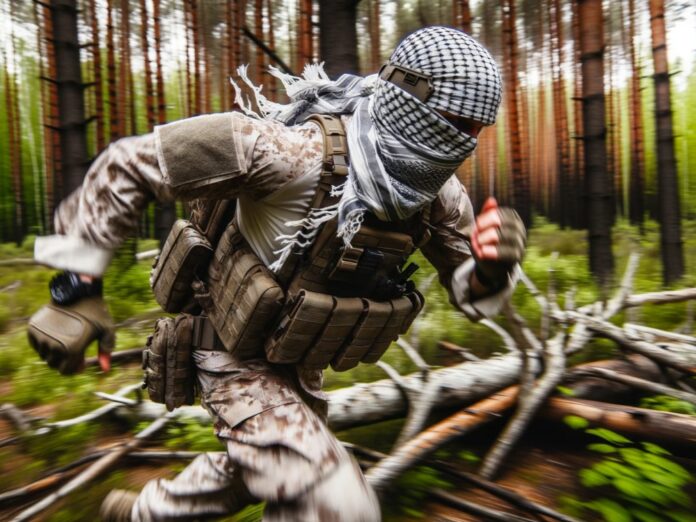Tactical shemaghs are versatile and practical accessories that serve a variety of purposes in various settings. Whether you are in the military, engaged in outdoor activities, or simply looking for a functional and stylish accessory, a tactical shemagh can be a useful addition to your gear.
This article will explore the uses and benefits of a tactical shemagh, its history and origins, as well as its practical applications in different scenarios.
A tactical shemagh is a type of headscarf or neck wrap that is commonly used in desert regions. It originated in the Middle East and has been adopted by military personnel, outdoor enthusiasts, and fashion-conscious individuals worldwide.
Made from lightweight and breathable fabric, tactical shemaghs are designed to provide protection and functionality in various environments and situations.
When selecting a tactical shemagh, considerations such as material, design, and quality should be taken into account.
Learning different techniques for wearing and wrapping the shemagh is also important for optimal protection and functionality. Proper maintenance and care of the shemagh will ensure its longevity and performance.
What is a Tactical Shemagh?
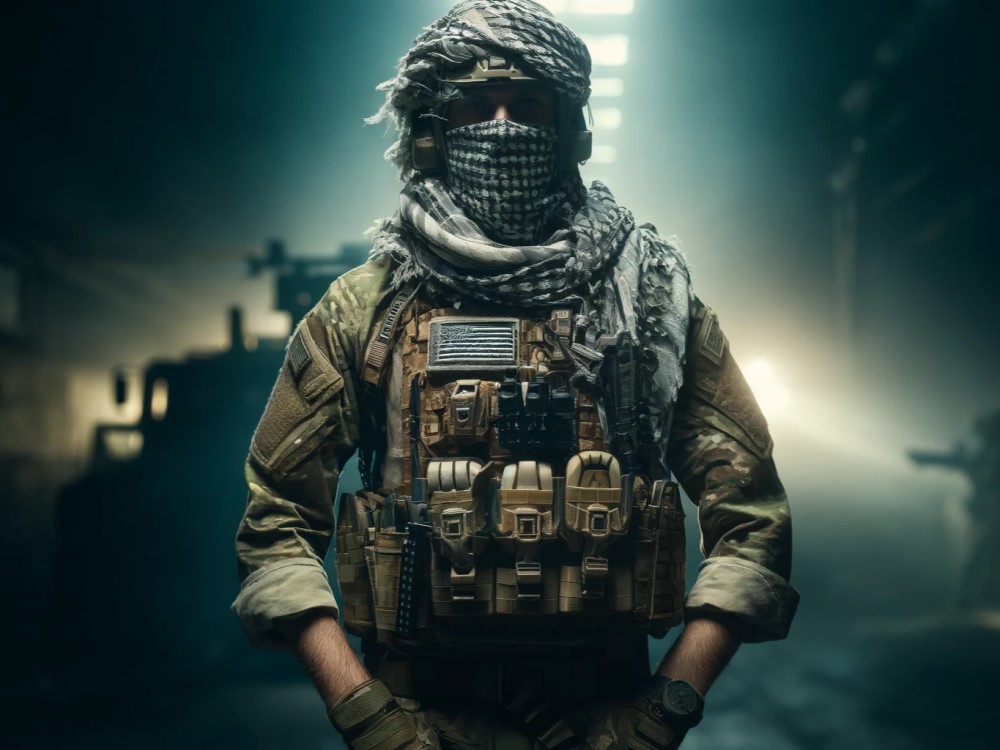
Photo Credits: Paintballbuzz.Com by Charles Campbell
The tactical shemagh, a versatile accessory with a rich history and intriguing origins, is the subject of our exploration. Join us as we uncover the fascinating background and lineage of this popular piece of gear.
From its ancient roots to its modern day applications, we’ll unveil the captivating story behind the tactical shemagh. Prepare to be enthralled by the historical significance and diverse uses of this remarkable garment.
History and Origins of the Tactical Shemagh
The history and origins of the tactical shemagh can be traced back to the Middle East. This versatile and practical garment has been used by various cultures for centuries. Originally, the shemagh was worn by Arabian nomads to protect themselves from the harsh desert conditions. It provided both heat and sand protection, making it an essential garment for survival in the desert.
Over time, the tactical shemagh gained popularity beyond the Middle East and became widely recognized and utilized by military and outdoor enthusiasts around the world. Its design and functionality make it an ideal accessory for various purposes.
The shemagh’s origins can be attributed to the Arab culture and its traditional headgear. The garment is typically made from a lightweight and breathable fabric, which allows for comfort and versatility. It is known for its distinctive checkered pattern and can be worn in different ways to provide protection from heat, dust, and sand.
In addition to its practical uses, the shemagh has also become a fashion statement and a symbol of adventure and exploration. Its rich history and cultural significance make it a unique and desirable accessory for those seeking both functionality and style.
Practical uses of a Tactical Shemagh
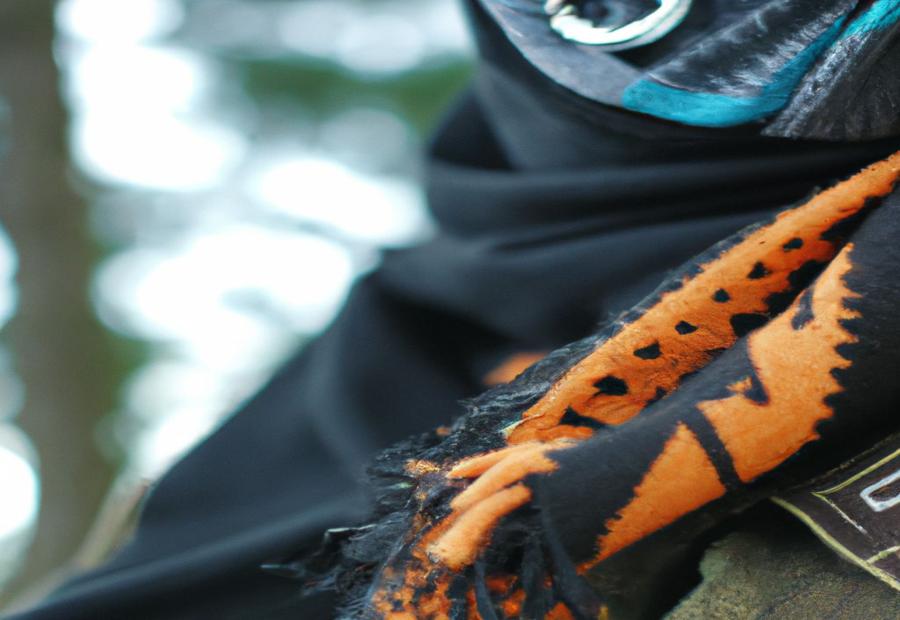
Photo Credits: Paintballbuzz.Com by Thomas Rodriguez
Tactical shemaghs are more than just a fashion statement. They serve a variety of practical purposes in different situations.
From protecting yourself against dust and sand to providing insulation in cold weather, a tactical shemagh is a versatile piece of gear.
It also offers heat and sun protection, handy in scorching climates. In emergencies, it can double as a first aid tool or aid in camouflage and concealment.
Whether you’re an outdoor enthusiast or a survivalist, a tactical shemagh is a must-have item that serves multiple practical uses.
1. Protection from Dust and Sand
Protection from dust and sand is one of the main benefits of using a tactical shemagh. There are several reasons why it is effective:
- A tactical shemagh is crafted from a tightly woven fabric, which effectively blocks out dust and sand particles, creating a protective barrier for your face and neck.
- The fabric is specifically designed to be breathable, allowing air to pass through while still preventing larger particles from getting in.
- By wrapping the shemagh around your face and neck, you gain coverage and safeguard against airborne irritants, making it especially advantageous in desert or dusty environments.
- The shemagh has a versatile design, allowing you to adjust it to cover your nose and mouth, or shield your ears and neck from sand and dust.
- Wearing a shemagh also helps prevent dust or sand from irritating your eyes, ensuring added comfort and uninterrupted vision.
Whether you find yourself in a sandy desert or a dusty construction site, using a tactical shemagh can be a practical and functional solution to safeguard against dust and sand particles.
2. Heat and Sun Protection
The Tactical Shemagh provides essential heat and sun protection, making it a versatile piece of gear for outdoor activities. Here are some key points to consider:
- Sunburn prevention: The Tactical Shemagh acts as a barrier between your skin and the sun’s harmful rays, reducing the risk of sunburn and skin damage.
- UV protection: The fabric of the Shemagh can offer varying degrees of UV protection, shielding your face and neck from the sun’s ultraviolet radiation.
- Heat insulation: When wrapped around the head or neck, the Shemagh provides insulation against high temperatures, helping to keep you cool and prevent heat-related illnesses.
- Sweat absorption: The absorbent nature of the fabric helps to wick away sweat, keeping you dry and comfortable in hot and humid conditions.
When choosing and carrying a Tactical Shemagh for heat and sun protection, consider the following:
- Material: Opt for a lightweight and breathable fabric that offers sufficient sun protection while allowing airflow to keep you cool.
- Design: Look for a Shemagh with a large size that can be easily wrapped around your head and neck to provide maximum coverage.
- Techniques: Learn different wrapping techniques to customize the level of coverage and ventilation based on the intensity of the heat and sun exposure.
- Maintenance: Ensure regular cleaning and proper care of the Shemagh to maintain its effectiveness and longevity in providing heat and sun protection.
Remember, the Tactical Shemagh is not only functional but also a stylish accessory that complements your outdoor attire. Stay protected and comfortable under the sun with a reliable tactical shemagh.
3. Cold Weather Protection
When it comes to cold weather protection, a tactical shemagh can be a valuable accessory. Here are some ways in which it can be used:
- Retaining warmth: The shemagh can be wrapped around the neck and face to provide insulation from the cold wind.
- Head cover: It can be worn as a head cover to prevent heat loss from the head, keeping the wearer warm.
- Facial protection: By covering the nose and mouth, the shemagh can help protect against frostbite and keep the face warm.
- Layering: The shemagh can be used as an additional layer of clothing, providing an extra barrier against the cold.
It’s important to note that a tactical shemagh is not a replacement for appropriate cold weather gear such as winter jackets and gloves. It should be used as a supplementary item to enhance cold weather protection.
Fact: The tightly woven fabric of a tactical shemagh helps to trap heat and retain warmth, making it a useful tool for cold weather protection.
4. First Aid and Emergency Situations
In emergency situations, a tactical shemagh can be a useful tool for first aid and emergency situations. Here are some steps to follow:
- Use the shemagh to create a makeshift bandage to stop bleeding. Fold it into a triangle, place the long edge against the wound, and tie the two ends behind the neck.
- Protect your face from smoke, dust, or chemicals by wrapping the shemagh around your nose and mouth. Make sure it fits snugly and covers your nose and mouth completely.
- If someone is injured and needs to be immobilized, you can use the shemagh as a sling. Fold it diagonally, place the injured arm in the middle, and tie the two ends behind the neck.
- In case of a fracture or sprain, use the shemagh as a splint. Place a firm object like a stick or rod next to the injured limb, then wrap the shemagh tightly around the object and the limb to provide support.
- If you find yourself lost or in need of signaling for help, the shemagh can be used as a flag. Attach it to a long pole or stick and wave it in a visible area to attract attention.
In these emergency situations, a tactical shemagh can come in handy and provide various functionalities to ensure your safety and well-being for First Aid and Emergency Situations.
5. Camouflage and Concealment
- Camouflage: A tactical shemagh is an essential tool for achieving effective camouflage in various situations. Its pattern and color can help you blend seamlessly with the surrounding environment. The earth-tone colors like khaki, olive drab, or desert sand are particularly popular for achieving optimal camouflage.
- Concealment: In addition to its camouflage capabilities, a tactical shemagh is a versatile tool for concealment purposes. It can be skillfully wrapped around your face, neck, and head, effectively concealing your identity and features, especially during tactical or covert operations.
- Breaking up Silhouette: By draping the shemagh over your shoulders and upper body, you can effectively disrupt the human silhouette and make it incredibly challenging for others to identify you from a distance. This advantage is crucial in situations where remaining hidden and undetected is your top priority.
- Covering Equipment: The functionality of a shemagh extends beyond personal concealment. It can also be utilized to cover and camouflage your equipment, such as backpacks, weapons, or gear. By seamlessly blending them into the surroundings, you significantly minimize the risk of them being easily spotted or recognized.
- Blinding Glare: Moreover, the shemagh can be worn over your head or around your neck to shield your eyes from direct sunlight or glare. This not only enhances your vision but also reduces the chance of being detected due to squinting.
6. Practical Gear and Equipment
Here are some practical gear and equipment suggestions when using a tactical shemagh:
- Headwear: The tactical shemagh can be worn as a headwrap to protect your head and face from the elements. It provides additional insulation in cold weather and can also protect from sunburn and heatstroke.
- Neck protection: Wrapping the shemagh around your neck can provide warmth and protection against cold winds and harsh weather conditions.
- Face mask: Use the shemagh as a face mask to shield your face and filter out dust, sand, and other airborne particles.
- Weapon accessory: The shemagh can be used as a sling for carrying rifles or other weapons, providing a convenient and secure way to carry your gear.
- Signal flag: Tie the shemagh to a stick or pole to create a visible marker or signal flag for emergencies or navigation purposes.
- Storage pouch: The shemagh can be folded and tucked into itself to create a small pouch for storing small items like keys, compass, or first aid supplies.
When choosing a tactical shemagh, consider the material and design for durability and functionality.
It should be made of a lightweight and breathable fabric that will dry quickly. Techniques for wearing and wrapping the shemagh can be learned through tutorials or demonstrations.
Lastly, proper maintenance and care, such as washing and drying according to the manufacturer’s instructions, will ensure its longevity.
Tactical Shemagh in Military and Outdoor Activities
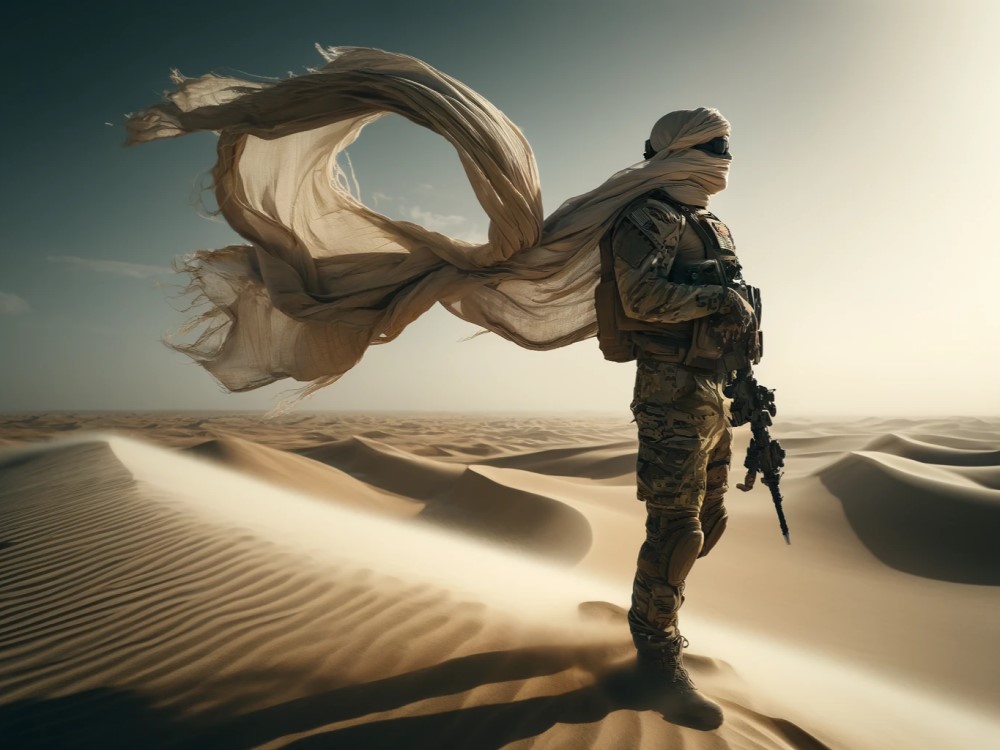
When it comes to the tactical shemagh, its versatility and functionality extend beyond fashion statements.
In the realm of military and outdoor activities, this humble garment proves its worth in various ways. From military and law enforcement applications to outdoor survival, camping, hunting, shooting sports, and even paintball and airsoft, the tactical shemagh has become an essential companion.
Whether it’s providing protection, adding camouflage, or serving as a multi-purpose tool, let’s dive into the world where the tactical shemagh takes center stage.
1. Military and Law Enforcement Applications
The tactical shemagh has a variety of applications in military and law enforcement settings, making it a versatile piece of gear.
- Protection from hazards: The shemagh’s fabric provides protection against dust, debris, and other airborne particles, keeping the wearer’s face and respiratory system safe in challenging environments.
- Camouflage and concealment: The shemagh’s design allows it to be used as a face covering or headgear, aiding in camouflage and concealment during operations.
- Tactical signaling: The shemagh’s distinct pattern can be used to send signals or identify fellow personnel in the field, enhancing communication and coordination.
- Sun and heat protection: When wrapped around the head and neck, the shemagh acts as a barrier against intense sun exposure and helps regulate body temperature in hot climates.
- First aid and emergency situations: The shemagh can be used as an improvised bandage, tourniquet, or sling in emergency situations, providing essential aid until professional medical help arrives.
- Equipment management: The shemagh can be used to secure and protect equipment such as weapons, tools, or communication devices, ensuring quick and easy access when needed.
Whether it’s for protection, communication, or practical use, the tactical shemagh is an essential tool for military and law enforcement personnel.
2. Outdoor Survival and Camping
When it comes to outdoor survival and camping, a tactical shemagh can be an invaluable tool to have. Here are some practical uses of a tactical shemagh in these situations:
- Protection from Dust and Sand: A tactical shemagh can be worn over the face and neck to protect against dust and sand, ensuring clear visibility and preventing irritation.
- Heat and Sun Protection: When exposed to intense heat and sun, a tactical shemagh can be draped over the head and neck to provide shade and prevent sunburn.
- Cold Weather Protection: In cold weather conditions, a tactical shemagh can be wrapped around the neck and face to provide insulation and retain body heat.
- First Aid and Emergency Situations: A tactical shemagh can be used as a makeshift bandage, tourniquet, or sling in emergency situations, making it a versatile tool for first aid.
- Camouflage and Concealment: By incorporating natural elements into the shemagh, it can be used to blend into the surrounding environment and provide camouflage during outdoor activities.
- Practical Gear and Equipment: The shemagh can be utilized as a towel, sweatband, or even as a makeshift bag to carry small items.
3. Hunting and Shooting Sports
When it comes to hunting and shooting sports, a tactical shemagh can be a highly useful accessory. Here are some practical uses of a tactical shemagh in such activities:
- Protection from dust and debris: The thick fabric of a tactical shemagh provides a barrier against dust, sand, and other particles that may be present in outdoor shooting environments.
- Heat and sun protection: A tactical shemagh can be wrapped around the head and neck to shield against the sun’s rays and provide relief from overheating during long hours of hunting or shooting.
- Cold weather protection: In colder climates, a tactical shemagh can provide insulation and warmth when used as a neck or face wrap, helping to prevent wind chill and maintain body temperature.
- First aid and emergency situations: The versatility of a tactical shemagh allows it to be used as a makeshift bandage, sling, or tourniquet in case of injuries or emergencies during hunting or shooting activities.
- Camouflage and concealment: The pattern and colors of a tactical shemagh can help break up the outline of the shooter’s face and provide camouflage against the surroundings, increasing stealth and minimizing detection.
- Practical gear and equipment: A tactical shemagh can be used to secure gear in place, protect optics or accessories from scratches, or even function as a makeshift shooting rest.
4. Paintball and Airsoft
The tactical shemagh is a valuable piece of equipment in the world of paintball and airsoft, providing both protection and practicality for players. In the context of paintball and airsoft, the tactical shemagh serves several practical uses. Here are some important considerations:
- Protection: The tactical shemagh provides essential protection in paintball and airsoft games. It helps to shield the face, ears, and neck from impacts, dust, and debris.
- Camouflage: With its distinct pattern and colors, the shemagh can enhance camouflage effectiveness. It allows players to blend into their surroundings, making it harder for opponents to spot them.
- Head and Eye Protection: The shemagh can be wrapped around the head to provide additional padding and protection from impacts during intense gameplay. It can also help to prevent sweat from getting into the eyes, maintaining clear vision.
- Breathability: The fabric used in tactical shemaghs is typically breathable, allowing for better comfort and preventing overheating during extended periods of play.
- Accessory Attachment: Many players utilize the shemagh as a versatile accessory. It can be used to secure or attach additional gear, such as goggles, helmets, or communication devices.
The tactical shemagh is a valuable piece of equipment in the world of paintball and airsoft, providing both protection and practicality for players.
Choosing and Carrying a Tactical Shemagh
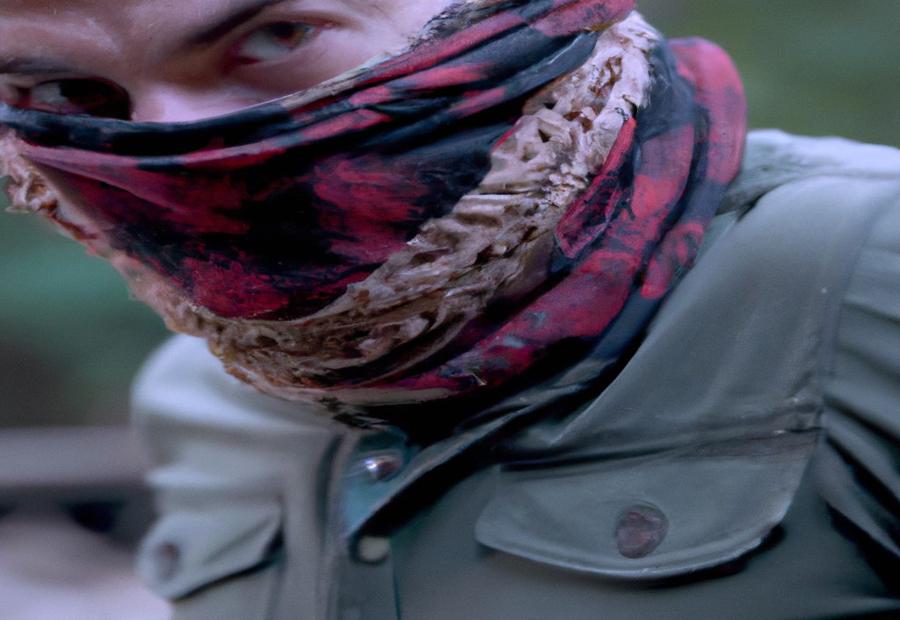
Photo Credits: Paintballbuzz.Com by Christian Green
When it comes to choosing and carrying a tactical shemagh, there are key factors to consider. Let’s dive into the world of material and design considerations, exploring the various options available. We’ll then uncover techniques for wearing and wrapping the shemagh, discovering how to maximize its functionality. And finally, we’ll delve into maintenance and care tips, ensuring that your tactical shemagh remains durable and ready for any adventure. Get ready to elevate your tactical gear game like never before!
1. Material and Design Considerations
When considering the material and design of a tactical shemagh, it is important to take certain factors into account:
| Material | Considerations |
| Cotton | Cotton shemaghs are lightweight, breathable, and provide good comfort. They are also highly absorbent, making them ideal for hot and humid climates. |
| Polyester | Polyester shemaghs are durable, quick-drying, and have good resistance to wrinkles and shrinking. They are suitable for rugged outdoor activities. |
| Blend | A blend of cotton and polyester combines the advantages of both materials, offering breathability, durability, and quick-drying properties. |
| Design | The design of a tactical shemagh should include a large size, usually around 42×42 inches, to provide ample coverage and versatility. It should also feature traditional patterns or camouflage prints for enhanced concealment and style. |
A pro-tip for choosing a tactical shemagh is to consider the specific environment and intended use. If you will be in hot and arid conditions, a cotton shemagh may be more suitable for its breathability.
For rugged outdoor activities or when quick-drying is important, a polyester or blend material would be a better choice. By selecting the right material and design, you can ensure that your tactical shemagh meets your specific needs and enhances your outdoor experience.
2. Techniques for Wearing and Wrapping
To effectively wear and wrap a tactical shemagh, follow these Techniques for Wearing and Wrapping:
- Start with a folded shemagh: Begin with a folded shemagh, holding one corner in each hand.
- Place over the head: Bring the shemagh over your head, positioning it so that the two ends hang evenly in front of your body.
- Crisscross the ends: Take the right end and cross it over the left end, creating an “X” shape at the front of your neck.
- Wrap around the back: Take the ends and wrap them around the back of your head, bringing them forward to the front again.
- Tie a secure knot: Tie a knot with the ends at the front of your neck, ensuring a secure and comfortable fit.
- Adjust for personal preference: Adjust the tightness and positioning of the shemagh to your liking. It can be worn snugly over the nose and mouth for added protection or loosely for a more relaxed look.
- Use as a face covering: If desired, you can pull up the lower portion of the shemagh to cover your face, providing an additional layer of protection.
By following these Techniques for Wearing and Wrapping, you can effectively wear and wrap a tactical shemagh, ensuring versatility, functionality, and style in various outdoor and tactical situations.
3. Maintenance and Care
When it comes to the maintenance and care of a tactical shemagh, there are a few important considerations:
- Regular Cleaning: It is necessary to clean the shemagh regularly to keep it free from dirt, sweat, and odors. Hand wash it using mild soap and cold water. Avoid using harsh chemicals or bleach that can damage the fabric.
- Drying: After washing, air-dry the shemagh in a shaded area. Avoid direct sunlight as it can fade the colors and weaken the fabric.
- Storage: Store the shemagh in a clean and dry place. Avoid keeping it in damp areas that can promote mold or mildew growth.
- Ironing: If the shemagh becomes wrinkled, you can iron it on a low setting. Place a thin cloth over the shemagh before ironing to protect the fabric from direct heat.
- Repair: If the shemagh gets damaged, such as frayed edges or loose threads, it is important to repair it promptly. Use a needle and thread to stitch any loose parts and prevent further damage.
- Inspecting: Regularly inspect the shemagh for any signs of wear and tear. Replace it if there are significant damages that compromise its functionality.
By following these maintenance and care practices, you can ensure that your tactical shemagh stays in good condition and continues to serve its intended purposes.
Frequently Asked Questions
What are the common uses of a tactical shemagh?
A tactical shemagh, also known as a keffiyeh or kufiya, has a wide range of uses. Some of the common uses include:
- Protecting the head and face from the sun, dust, and wind.
- Using it as a towel or sweatband.
- Providing protection against insects and bugs.
- Using it as an improvised bag or pouch.
- Insulating against cold weather.
- Filtering water by using it as a sieve.
- Using it as emergency rope or cordage.
- Creating padding for carrying heavy loads.
- Using it as a signal flag for communication.
- Camouflaging by using it as a face mask or to blend into surroundings.
Can a shemagh be used as toilet paper in emergency situations?
Yes, a shemagh can be used as toilet paper in emergency situations. Its soft woven cotton fabric can provide a suitable alternative when other options are not available.
How can a shemagh be used as an emergency fire starter?
A shemagh can be turned into an emergency fire starter by charring it in a metal container over a fire. The woven cotton material is highly combustible and can be used as tinder to ignite a fire.
What is a shepherds sling and how is a shemagh used to make one?
A shepherds sling is a primitive long-range weapon used for hunting small game. To make a shepherds sling with a shemagh, the shemagh can be folded and tied in a particular way to create the sling pouch, which is used to propel rocks or projectiles.
Can a shemagh be used as an emergency water filter?
Yes, a shemagh can be used as an emergency water filter. By filtering water through its pores before boiling it, the shemagh helps remove dirt and impurities, making the water safer to drink.
How can a shemagh be used to collect dew?
A shemagh can be tied at each corner to a stick and placed in an area where dew is likely to accumulate. With a rock placed in the middle to create a funnel, the shemagh can collect dew, providing a source of water in a survival situation.

